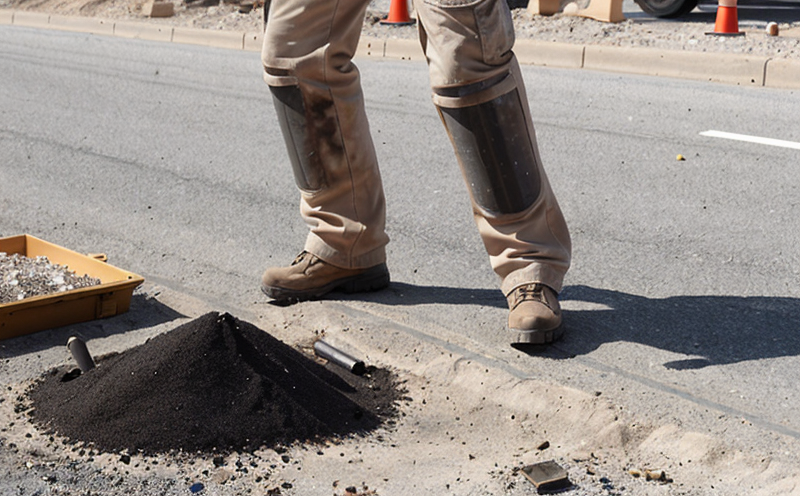EN 13631 Part 7 Determination of Detonation Pressure
The determination of detonation pressure is critical for the safe handling and application of explosives and blasting materials in mining operations. This test, as per EN 13631-7, provides a standardized method to measure the detonation pressure generated by explosive materials under specific conditions. Understanding this parameter ensures that the materials used meet safety standards and perform optimally during blasting processes.
The detonation pressure is defined as the maximum pressure generated at the point of detonation. This value is crucial for several reasons: it influences the efficiency of the blast, impacts surrounding rock fragmentation, and affects worker safety. The test measures this pressure using specialized equipment that can withstand high-pressure environments typical in mining blasting.
The EN 13631-7 method involves loading a sample of the explosive material into a cylindrical container with a precise internal diameter to ensure accurate measurements. The container is then placed in a controlled environment where it is subjected to an electrical or mechanical ignition source, initiating detonation. High-speed pressure sensors capture the peak pressure generated during this process.
The test parameters are strictly defined by EN 13631-7. For instance, the sample size and shape must adhere to specified dimensions to ensure consistent results. The testing environment should be free from external disturbances that could influence the outcome. Compliance with these standards ensures reliable data that can be used for product certification and regulatory compliance.
Accurate determination of detonation pressure is not only beneficial for material selection but also for optimizing blasting designs in mining operations. Engineers use this information to fine-tune blast parameters, ensuring they achieve the desired fragmentation without overloading or underutilizing the explosives. This optimization contributes significantly to operational efficiency and cost-effectiveness.
| Parameter | Description | Standard Value |
|---|---|---|
| Sample Diameter | Internal diameter of the test container. | 50 mm ± 1 mm |
| Test Chamber Pressure | Pressure in the chamber during detonation. | 20 MPa - 30 MPa |
| Detonation Ignition Method | Type of ignition used to initiate explosion. | Cable detonator or spark igniter |
Scope and Methodology
The scope of the EN 13631 Part 7 test encompasses the determination of detonation pressure for various explosive materials used in mining operations. The methodology involves precise measurement using specialized equipment, ensuring compliance with international standards.
- Sample Preparation: Explosive samples are prepared to standard dimensions and placed into a cylindrical container with a known internal diameter.
- Environment Setup: The test chamber is pressurized to simulate conditions under which the detonation occurs. The setup ensures minimal external interference that could skew results.
- Detonation Initiation: A controlled ignition source is used to initiate detonation, ensuring a uniform and repeatable event.
- Data Collection: High-speed pressure sensors capture the peak pressure generated during detonation. This data is analyzed for accuracy and consistency.
Why Choose This Test
- Ensures compliance with international standards, enhancing credibility of the results in global markets.
- Precise measurement of detonation pressure aids in optimizing blasting processes for maximum efficiency and safety.
- Aids in material selection by providing accurate data on explosive performance characteristics.
- Supports regulatory compliance, which is essential for ongoing operations within the mining sector.
Use Cases and Application Examples
- Blasting Design Optimization: Engineers use detonation pressure data to fine-tune blasting designs, ensuring the most effective fragmentation with minimal overloading.
- Risk Assessment: Determining detonation pressure helps in assessing risks associated with blasting operations, thereby enhancing worker safety and operational reliability.
- Product Certification: Manufacturers of explosives rely on this test for product certification, ensuring their materials meet stringent international standards.





